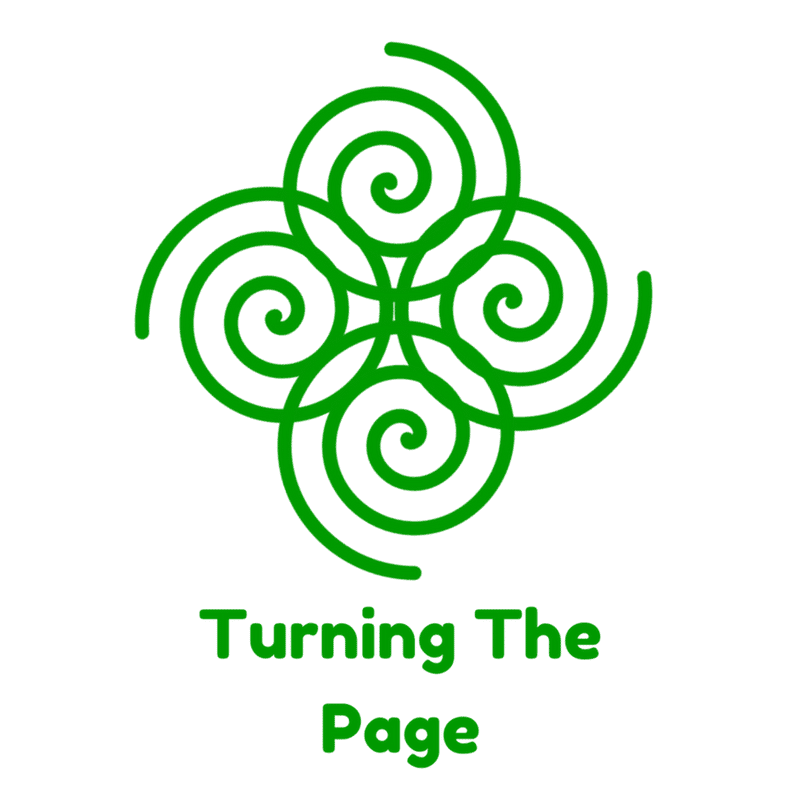Community brings so many positive effects on our mental health. Community lifts us higher and takes us further towards wellness than we ever could get on our own. Anyone wishing to enhance their mental health or the mental health of others does well to find a way to plug into a community.
But even among those who know this, many might not know why community is so helpful. Beyond naming the generalities of providing support and alleviating a sense of aloneness (both of which it does), most are not able to explain it in the way that they could explain, say, how the toaster works or why soap and water clean our hands better than water alone. Until recently, I couldn’t either.
I have spent a great deal of my life in community, and I’ve always believed it to be a good thing. But until a few years ago, when I came across the work of Dr. M. Scott Peck, I couldn’t have explained it either.
Dr. Peck was a psychiatrist who orchestrated group social experiments in community building and wrote about his findings through the 1970s, 80s, and 90s. Peck studied community building as a scientist: he observed and recorded scores of experiments over three decades.
The result was that he was able to define stages of community building and replicate the building of it with surprising accuracy. He and his community began the Foundation for Community Encouragement, which is still operating today, with annual community-building experiences.
Isn’t a Community Just a Group of People?
What Peck and others since have found is that a community is so much more than just a gathering of people. And, since the word is used to refer to all kinds of things—from housing developments to retirement homes—it might be good to start with a clear definition:
What Peck and those he worked with found to be community was a sense of oneness, palpable to those present, that emerged when a group gathered with the intention of building community and continued to work at it until they had moved through all of the building stages.
We won’t get into them all here, but Peck names the stages Pseudocommunity, Chaos, Emptiness, and True Community.
What they found after years of studying this is that community is like electricity: it is law abiding. As long as the conditions are right, community emerges.
What are the Conditions for Community?
Conditions for community building include safe and vulnerable communication, a shared intention to build it, resilience through the difficulties and chaos that come from human interaction, and a willingness to empty oneself of biases.
The first in this list is vital, but it is also where most groups (and people in general) go wrong:
No communication means no community.
If the group makes a habit of shaming, interrupting, talking over, or bullying, the train derails before it leaves the station. If members are not invited to share in a structured way, it usually never takes off either. This is why so many church and religious groups never achieve community together: it’s either not safe to share, or no one but the pastor is expected to talk.
How Does Community Foster Interdependence?
Once community is built, what emerges is a special kind of unity. In the social experiments he did, Dr. Peck found that once community was built, a group leader became unnecessary. The members all became leaders, stepping in and out of the role as needed. And, in that state of unity, what becomes possible over time is Interdependence.
Interdependence is the state of cooperative existence that operates often in nature and can be reached within human relationships with intention and practice.
In nature, it is due to the interconnectedness of all things at quantum, micro-organism, organism, and macro-organism levels. It is sometimes called emergence or epiphenomenon. In biology, it is beyond commensalism, where in relationships between species, one benefits and simply does not harm (or benefit) to the other. It is where both benefit in a kind of a relational dance.
A murmuration of starlings demonstrates this dynamic system of movement based on an optimized balance of flight that creates a phenomenon of oneness without a leader. It is said to be a combination of managing uncertainty while maintaining consensus. The birds move at top speed, changing directions as one, but no one bird is calling the shots. Something greater is at work. In short, the emerging oneness is greater than the sum of its parts.
Who Handles the Decision Making in Community?
In community, interdependence means a focus on unity over uniformity. This is achieved via the same balance of uncertainty and consensus as it is in nature.
Once community emerges and interdependence becomes possible, consensus on decisions becomes a dance of respectful communication and shared compromise. Building community is the foundation for being able to discuss difficult things and make hard decisions as one. It also allows for shared action taking toward the greater good.
Can Community be Built in the Home?
We often think of community as something existing in outside groups, but it can also be built in the home. Usually, the adults set the tone and can foster an atmosphere of safe communication and vulnerable sharing that allows community to emerge there as well. Activities that provide a structured sharing time, such as question and answer games, can help.
Of course, close living means that boundaries play a significant role, so it’s best if the adults are in healthy places within themselves concerning their own identities. If either partner is dependent, co-dependent, or independent to an extreme, due to unhealed wounds from earlier life experiences, community building and interdependence can be a challenge.
While no one is perfect, it’s best if the adults can stand on their own, being confident enough in their own identity to take responsibility for their actions, words, feelings, and intentions. Neither should be dependent on chemicals, escape tactics (such as overeating or overspending), or the control of others in their daily lives. And, both should acknowledge (and model) a healthy need of others for support, friendship, and love.
As these are modeled by the adults in a home, the children learn the patterns. At first, they watch the adults doing the steps of this dance; then the adults help them take the steps themselves, just as we teach our children dance steps by letting them stand on our toes. Eventually, they are dancing on their own.
What Does This Look Like in Practice?
Dancing metaphors aside, this is a real and achievable goal for couples, families, and groups. It maybe just isn’t as common as we would like. For those of us who did not come from homes where community or interdependence were experienced, it may be helpful to get a picture of what this might look like in everyday relationships. Here are some ideas:
-
The adults in a family each have their own work that they do because it gives them fulfillment. They work hard and know themselves well enough to know when they need to rest.
-
Neither of the adult partners is looking to the other to define them, and neither partner exercises control over the other. There is a shared acknowledgment that the work of both partners is necessary and important.
-
Family members each have their own goals and desires and are able to (and invited to) communicate these. They acknowledge, honor, and support the goals of the others, but they do not take them on as their own, so as to allow each of the others the enjoyment of working towards them and experiencing the fulfillment of achieving them.
-
Members of a group or team each celebrate their own and others’ wins. They also mourn the losses of the others as if they were their own. Both a win and a loss is a shared experience.
How is Compromise Handled?
In every family or group, even those with thriving community and interdependence, there are going to be conflicting goals. It’s inevitable. Here are some ideas about how compromise and resolution can work in community:
-
Parents have shared goals in regards to finances, children, and duties. These goals are discussed in terms of tasks and accepted responsibilities. There is an attempt at sharing these fairly and with an eye towards who is best at what. If one needs or wants something of the other, that is expressed by asking, not expecting or demanding. Both partners have an equal voice, and both are free to say ‘no’ without consequence. The partnership makes room for free will.
-
A family has shared goals regarding time spent together that may involve time invested in practices of spirituality, religion, physical exercise, enjoyment of nature, service, and shared social engagements. These are attempted with an eye to order, balance, and enjoyment, but are often opportunities to practice the management of uncertainty paired with consensus. Forgiveness, grace, and humor are employed on the regular.
-
With big decisions, each person in a group or partnership would be safe to express their opinion and desire—and each would be working to know themselves well enough to be able to identify both. Each would have a voice in the decision. When an impasse is reached there would be compromise, but it wouldn’t always be the same person or persons compromising every time.
-
With hobbies and downtime in a family setting, it would be acknowledged that they are necessary for everyone in the family to thrive. Each person would be responsible for choosing the activities that they enjoy and would be responsible for making room for them in their own lives. The duties of one partner would never be so great as to make downtime an impossibility for him or her and only possible for the other. Should imbalance be identified, both would share the goal of tweaking the duties to regain balance whenever possible.
Isn’t This a bit of an Idealistic Concept?
I know there will be some who will be shaking their heads, chuckling to themselves about how this is simply not possible when dealing with imperfect humans. Of course, there will still be problems and probably arguments too from time to time. But holding the ideal as the goal allows the group or family to recalibrate to it when things inevitably get out of alignment.
Where Can I Learn More About This?
If you’re interested in understanding more about how community is built through all of its stages, I highly recommend the works of M. Scott Peck. Also, visit the web site for the Foundation for Community Encouragement for resources and information on the process and annual events.
Quotes to Consider
- In and through community lies the salvation of the world. M. Scott Peck
- Community calls us to heights we cannot call ourselves. Jon Acuff
- Community is not merely a gathering of individuals coming together. Community is an almost alchemical reaction that happens among all that we are capable of being and becoming. Omid Safi.
Questions to answer
- What does interdependence look like in your life? (Or, what would you like it to look like?)
- In your experience, what has stopped community from emerging in groups you’ve been a part of?
- What was your most moving experience of community in action?
Cheryl Chastain
Image cc: rawpixel.com
Cheryl is a freelance writer, speaker, local community builder, and recovering codependent. She’s a contributor at Thrive Global, The Rabbit Room, and Sammiches and Psych Meds, and you can find her at Cheryl Chastain Medium, Twitter, and Contently.





